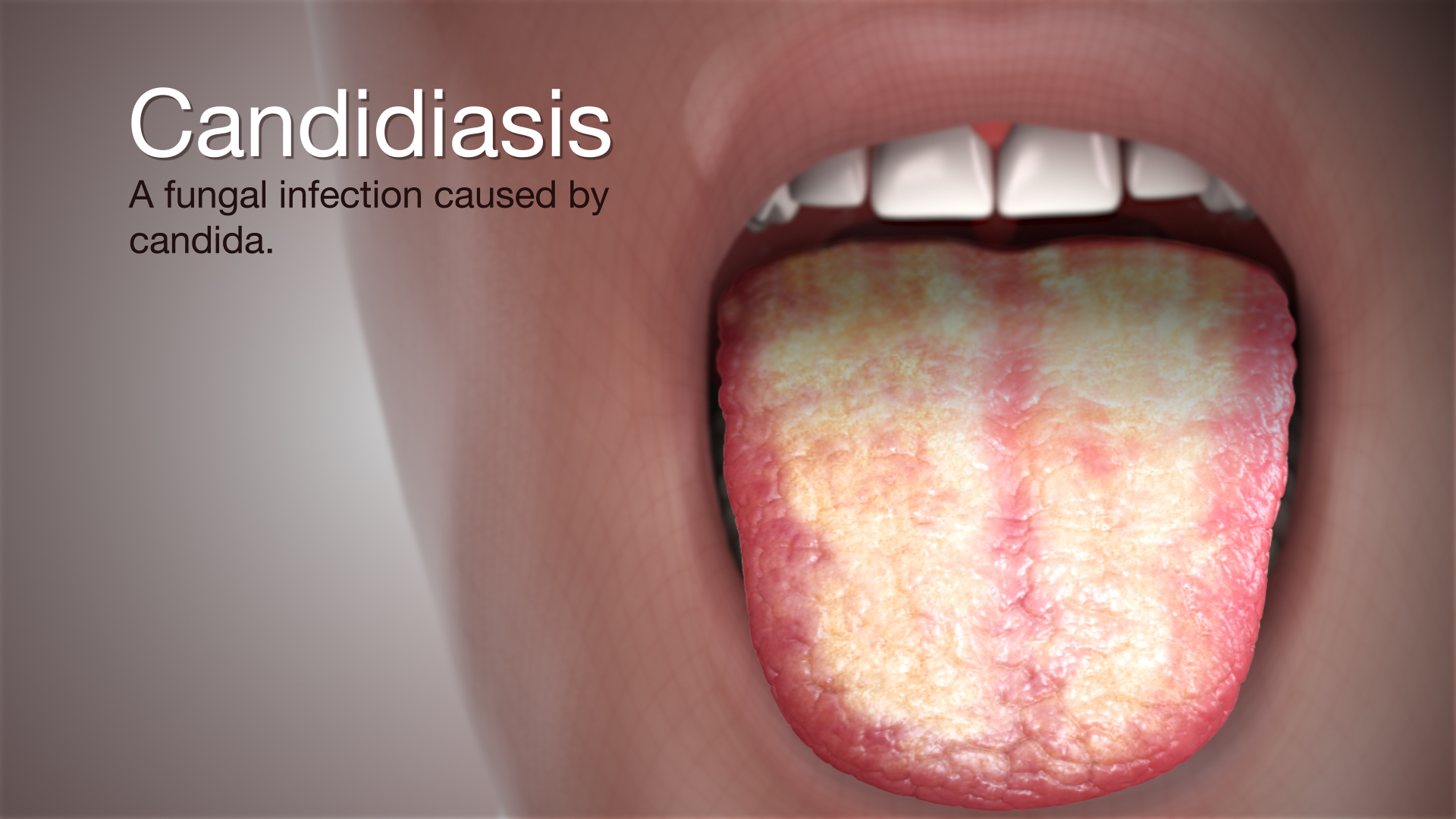Candidiasis is a fungal infection that is caused by a type of fungus called candida. Candida is a type of yeast that lives in our mouth, throat, gut or vagina (in case of women), or on the skin. There are many species of the fungus candida, but Candida albicans are the ones that usually cause the infections. They are normally present in a small number and are kept under control by the body’s immune defense system and native bacteria, but when they grow out of control or go deep into the body into organs such as kidney, heart or the brain, or go into the bloodstream, they cause infections.

The main types of infections caused by the candida yeast are :
Thrush: When the candida yeast spreads in the mouth or throat, the infection it causes is called Thrush. Thrush mostly affects newborns, elderly or people with weakened immune systems. People who have diabetes, are undergoing cancer treatment, wear dentures, and take a wide spectrum of antibiotics are also prone to get thrush.
Genital yeast infection: When too much yeast grows in the vagina, this infection may happen. At least 3 out of 4 women get this infection once during their lifetime. It is not very common for men to get this infection.
Invasive candidiasis: If the candida yeast enters the bloodstream, it can reach the organs such as the heart, brain, and kidney. People who are more likely to get this are people with diabetes, a weakened immune system, are on antibiotics or have been admitted to a hospital.
Esophagitis: When the infection spreads from the mouth to the esophagus, it is called esophagitis.
Cutaneous: Candida can also cause skin infections in areas that receive less ventilation and are unusually moist, such as the diaper area, groin area and in the crease of the buttocks.
Symptoms
The symptoms of the candidiasis infection depend on the type of infection. In thrush, white or yellow patches appear on the tongue, gums, lips, inner cheeks, and roof of the mouth. There is also redness and soreness in the mouth and throat. If the infection spreads to the throat, then there may be pain in swallowing too. In vaginal yeast infection, there is extreme itchiness, pain and burning when passing urine, swelling and redness of the vagina, white cottage cheese-like discharge, and pain during intercourse. When the infection is invasive candidiasis, there are symptoms of unexplained fever and chills and multiple organ failure.
Causes
Candida fungi live harmlessly in small numbers along with the other types of fungus and bacteria in the body. They are kept under control by the body’s immune defense systems and the other bacteria. But when the mix of bacteria changes either due to antibiotics or the moisture in the body that surrounds the bacteria changes in acidity or composition, it can cause the fungus to grow out of control and cause infection.
The most common factors responsible for increasing the risk of developing this infection are cancer treatments, steroids, mononucleosis, antibiotics, HIV or AIDS, diabetes, nutrient deficiency, and stress.
Treatment
Candidiasis is usually treated with antifungal medicines. Treatment depends upon the area that is infected. Thrush is treated with topical antifungal medicines such as nystatin and clotrimazole. Candida esophagitis is usually treated with an oral antifungal drug, fluconazole. Antifungal powders and creams are used in the treatment of cutaneous candidiasis. Genital yeast infections are commonly treated by directly applying antifungal creams and ointments on the genitals. In severe cases, a dose of oral fluconazole may also be prescribed. In the case of invasive candidiasis, antifungal drugs are administered intravenously.
Most candida infections may be prevented by keeping the skin clean and dry, by taking antibiotics only when the doctor prescribes, and by eating a nutritious diet and following a healthy lifestyle including regular exercise.
Disclaimer: The information in no way constitutes, or should be construed as medical advice. Nor is the above article an endorsement of any research findings discussed in the article an endorsement for any of the source publications.








